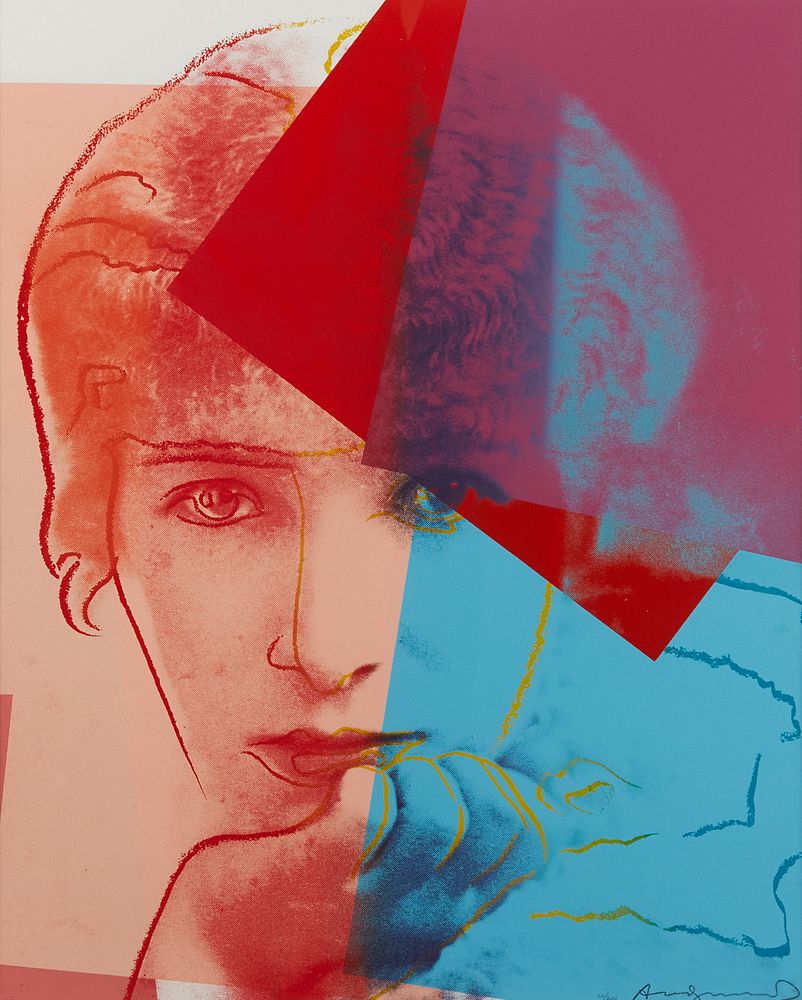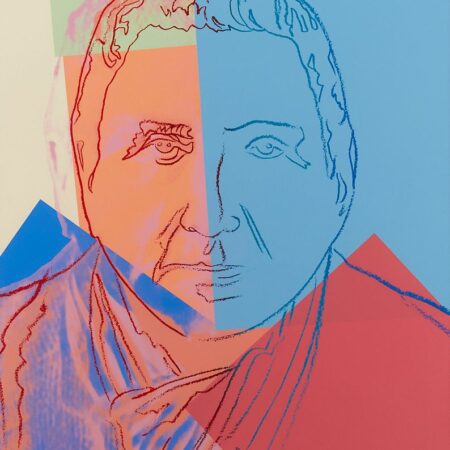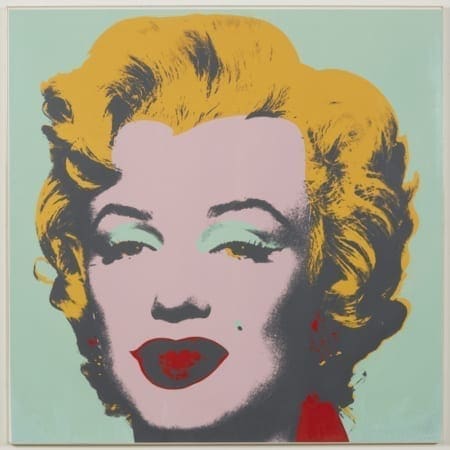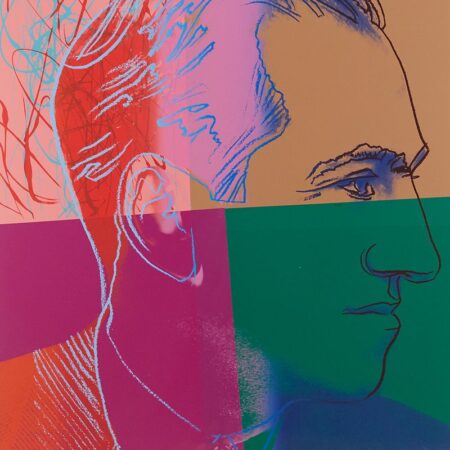
Andy Warhol (1928-1987). Screenprint on Lenox Museum Board titled “Sarah Bernhardt,” from “Ten Portraits of Jews of the Twentieth Century,” 1980. Pencil signed and numbered 62/200 along the lower right. Published by Ronald Feldman Fine Arts, Inc., New York and Jonathan A Editions, Tel Aviv, with the Rupert Jasen Smith blindstamp.
Literature: F. & S. II.234 Lot Essay: Lot Essay: Andy Warhol was born Andrew Warhola to a poor immigrant family in Pittsburgh. His early childhood was difficult, and young Warhol was frequently ill. During these periods of illness, he stayed at home from school with his mother, Julia, who he adored. To keep him occupied during bedridden periods, she and his siblings would bring him coloring books and magazines. This sparked an early interest in art, as well as a fascination with the movie stars in the magazines. Coloring, collaging, and dreaming of Hollywood got Warhol through these early illnesses, and this experience and his choice of escape stuck with him. After his recovery, he attended the movies weekly for the rest of his childhood, and continued this tradition with few interruptions through his adulthood. After high school, Warhol attended the Carnegie Institute of Technology to study art. He struggled initially, since the school had a fairly traditional and academic art department, something Warhol chafed against. He struggled in his theory classes his frequent absences from school and his immigrant parents had left him somewhat behind his peers academically but even more than that, he longed to be creative in a way his assignments wouldn’t allow.
Soon, however, things began to look up, as he gained the support of many of his professors and struck up friendships with many of his most creative classmates, many of whom, notably Philip Pearlstein, went on to become successful artists themselves. Following graduation, Warhol moved to New York City, where he made his home for the rest of his life. He began his career working as a freelance commercial artist, something many of his artistic contemporaries were also doing, and he soon began doing well in this field. His first notable success came when the director of Glamour Magazine commissioned him to illustrate women’s shoes, something he became known for as a commercial artist. He spun this theme into his first professional success as an artist, a 1956 series of paintings of shoes. Fittingly for someone with his pop culture obsession, these shoes were named and themed after major celebrities and movie stars. While Warhol’s career as a commercial artist had brought him financial success, his career as a fine artist took longer to take off. He did some gallery shows, which led to mixed reviews and no financial success. He began to be increasingly influenced by and jealous of the pioneering pop artists who moved on the edges of his circle, particularly Robert Rauschenberg and Jasper Johns, who had, by the late 1950s, managed to achieve both the success and the controversy that Warhol craved. By 1960, Warhol was making pop art in earnest. Eventually, a crisp, accurate painting of a Coca-Cola bottle a tidy and frustrated response to the abstract expressionism he was increasingly fed up with attracted the attention of the assistant of influential gallery owner Leo Castelli. However, getting picked up by a gallery took time. Warhol was in a constant state of production throughout the first two years of the 1960s, but had trouble striking on a subject he felt was just right.
When a friend suggested he paint everyday objects that were dear to him, he began his series of money and Campbell’s soup cans, for which he had an affection due to his mother making Campbell’s soup for him in his childhood. These series of paintings quickly attracted notice, with critics extolling the unique way he presented his objects, repeated but isolated. His career began to pick up; he showed his soup cans in Los Angeles, and was soon picked up by the Stable Gallery in New York, allowing him increased stability as a fine artist. He continued to produce series of duplicate works, and in 1962, he was introduced to silk-screening, a technique that would change the course of his career. Screen printing allowed Warhol to produce the vast quantities of identical pieces he wanted. He took a very detached view of his own and all art, and this new production method provided him the emotional space from his works that he desired. “Ten Portraits of Jews of the Twentieth Century” was painted in 1980, at a lull in Warhol’s illustrious career. Many critics at the time of the show viewed it as evidence that Warhol had completely sold out to commercialism–after all, Warhol had not even chosen the subjects of the pieces himself, but was instead given the idea and the subjects by his art dealer, Ronald Feldman.
However, despite critical receptions that ranged from lukewarm to scathing, the series proved to be a great success with the public, another win in Warhol’s ongoing rebellion against the artistic establishment. Indeed, these pieces fit neatly into Warhol’s oeuvre, another exploration into his obsession with celebrity. He portrays all of the distinguished individuals in this series in a way that is cohesive, but each portrayal is slightly different from the others in ways that emphasize each individual’s character.
Sight; height: 39 3/8 in x width: 31 3/8 in.
Framed; height: 46 1/2 in x width: 38 1/2 in.
$18,000



